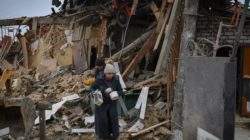NEW YORK: Last month, the United Nations marked World Refugee Day against the backdrop of a new tragic milestone: the number of individuals forced from their homes by war, persecution, violence, and human rights violations now exceeds 100 million.
This is just one of many heartbreaking findings from the UN refugee agency’s recently released Global Trends report.
According to the research, five countries — Syria, Venezuela, Afghanistan, South Sudan, and Myanmar — account for more than two-thirds of all displaced people worldwide.
The majority of the forcibly displaced population is made up of persons forced to move within their own countries, known as internally displaced people (IDPs). Syria, Yemen, Afghanistan, Ethiopia, the Democratic Republic of the Congo, and Colombia continue to have the world’s highest IDP populations.
If present conflicts are not resolved and new ones do not emerge, the UN research predicts that the twenty-first century would be marked by an increasing number of people compelled to flee and the increasingly restricted options open to them.
Population movements around the world have gotten so complex that aid organizations are rushing to find new solutions to the ongoing, huge exodus. People are escaping not only violence, but also economic inequity, as the global wealth gap widens.
Changes in weather patterns, as well as the resulting droughts, floods, and natural calamities, have displaced even more people. The food security situation has been compounded by the war in Ukraine, threatening a new wave.
The number was also propelled by new waves of violence and conflict in countries such as Ethiopia, Burkina Faso, Nigeria and Congo.
Source: Reuters










